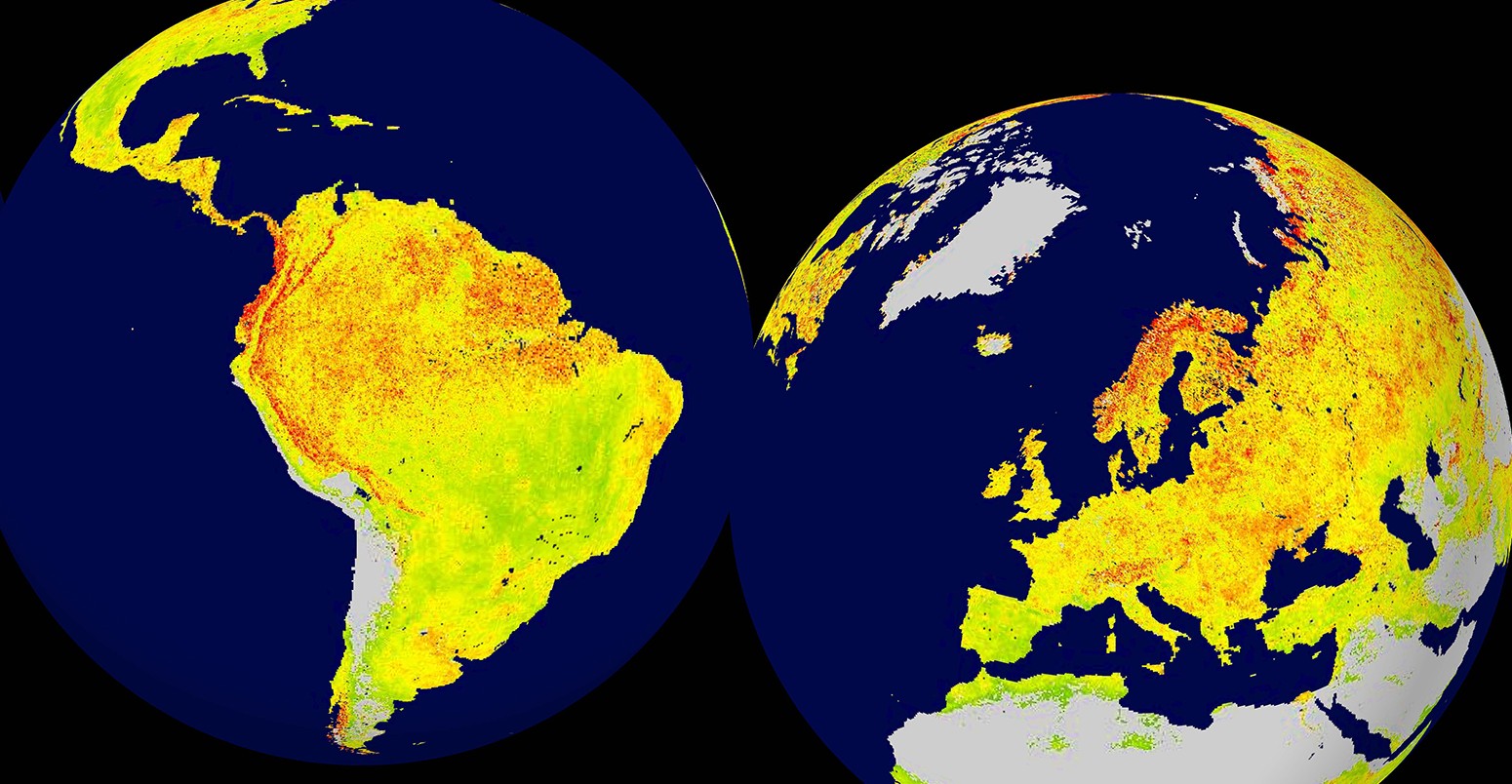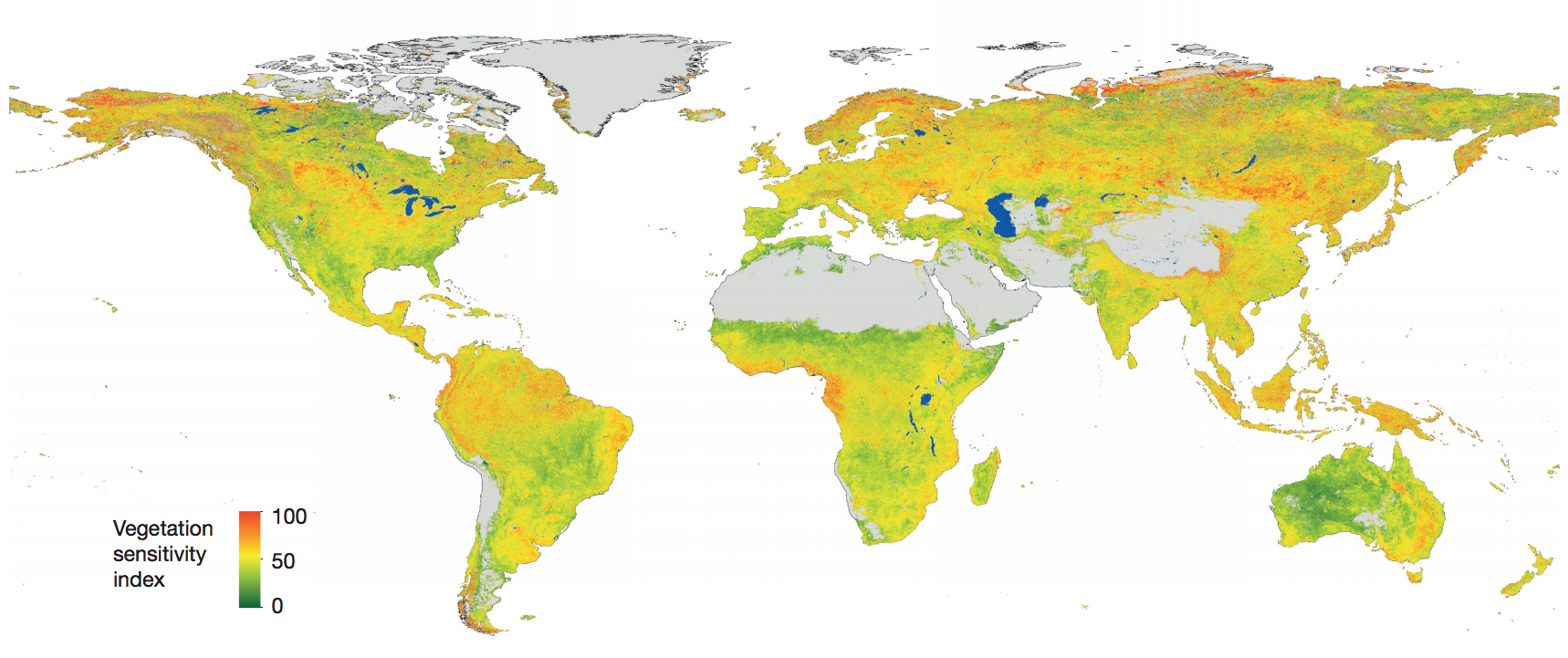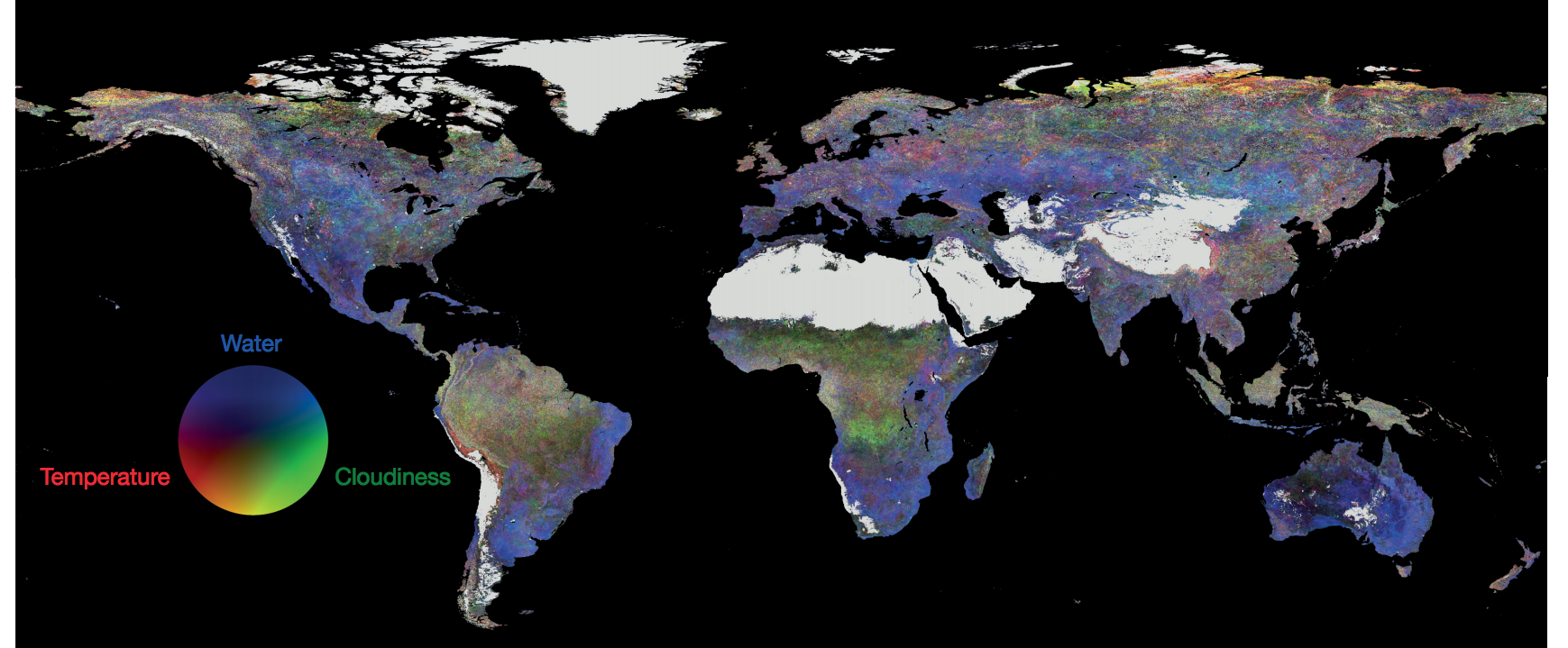
Mapped: The sensitivity of the world’s ecosystems to climate
Robert McSweeney
02.17.16Robert McSweeney
17.02.2016 | 6:00pmThe Earth is covered by a huge variety of ecosystems, from the lush rainforests of the hot and humid tropics to the rugged tundra of the cold and windswept Arctic.
Research out today, published in Nature, maps how sensitive these different types of vegetation are to the ups and downs of the climate from one year to the next.
The map below illustrates the study’s new “vegetation sensitivity index”, which indicates to what extent plant growth is affected by fluctuations in the climate. Ecosystems that are most sensitive to climate variability are shaded red, while those with low sensitivity are shaded green.
You can see there are highly sensitive regions around the Gulf of Guinea in West Africa, along the mid-to-high latitudes of the northern hemisphere, in the tropical forests of South America, and along the eastern side of Australia.

Sensitivity of vegetation productivity to variations in the climate during 2000-2013, for 5km grid squares across the Earth’s surface. Scores range from 0 (low sensitivity, green) to 100 (high sensitivity, red). Areas with dominant barren land or permanent ice are shaded grey. Inland seas and lakes are shaded blue. Source: Seddon et al. (2016).
Sensitivity
So, how do the researchers work out if an ecosystem is “sensitive” or not?
Plants need warmth, water and sunlight (as well as nutrients) in order to grow. Using satellite data for 2000-13, the researchers estimated how plant growth across the world has varied with fluctuations in temperature, water availability and cloud cover. Satellites measure changes in plant growth by the “greenness” of the vegetation.
Lead author Dr Alistair Seddon, a researcher at the University of Bergen, explains to Carbon Brief:
The map demonstrates how satellite data can be used to measure how ecosystems respond to the climate, says Prof Alfredo Huete, from the University of Technology Sydney, in an accompanying “news and views” article. This will help scientists understand what the future holds for the Earth’s vegetation under climate change, he writes:
Climate variables
The researchers also worked out which of the three climate variables is most important for each ecosystem. Seddon explains:
For areas that are consistently warm and wet, such as tropical rainforests, plant growth depends heavily on fluctuations in cloud cover affecting the sunlight they receive, adds Seddon.
You can see this in a second map below. For example, the tropical forests in the Amazon, central Africa, and southeast Asia are most sensitive to cloudiness, so they are mostly shaded green. On the other hand, the vast prairie grasslands in the middle of North America are sensitive to water availability, and so they appear blue in the map. Areas that are very sensitive to more than one climate variable show a combination of colours, so purple areas, for example, are sensitive to both temperature (red) and water availability (blue).

Contribution of three climate variables (temperature, red; water availability, blue; and cloudiness, green) to overall ecosystem sensitivity to climate. Data collected during 2000-2013, for 5km grid squares across the Earth’s surface. Areas with dominant barren land or permanent ice are shaded grey. Inland seas and lakes are shaded blue. Source: Seddon et al. (2016).
Main image: Global snapshot of the Vegetation Sensitivity Index. Credit: Seddon et al (2016).
Seddon, A. W. R. et al. (2016) Sensitivity of global terrestrial ecosystems to climate variability, Nature, doi:10.1038/nature16986 & Huete, A. (2016) Vegetation’s responses to climate variability, Nature.

